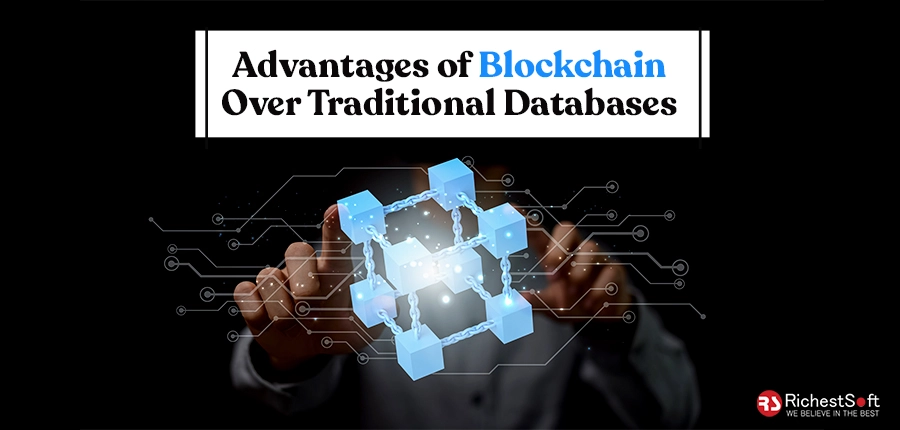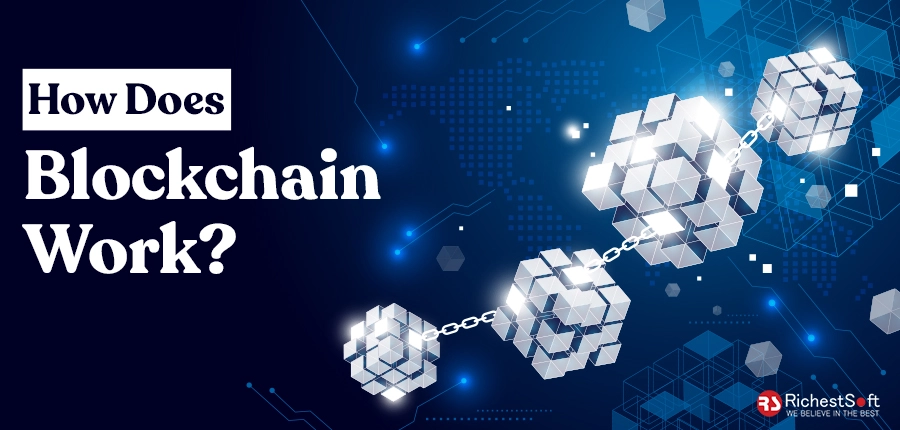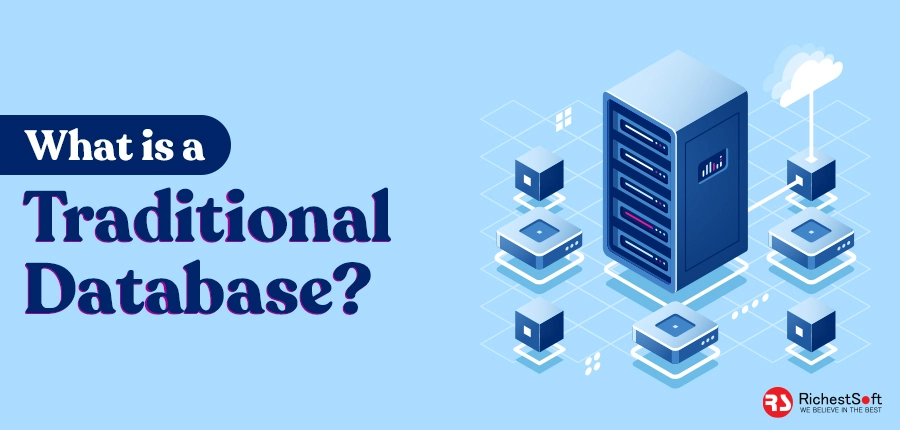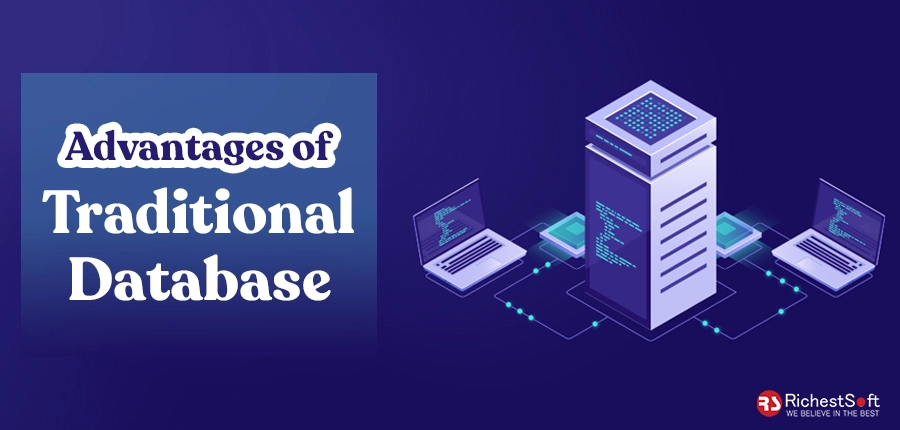Blockchain technology has been gaining immense popularity in recent years, with businesses and organizations embracing its use in various applications. But how is it different from traditional database models? In this blog, we explore the differences between blockchain and traditional databases.
We will look at the advantages of blockchain over traditional databases, as well as its challenges and limitations. Finally, we’ll try to answer one of the most important questions: Is Blockchain A Database? and Is blockchain really worth investing in or is it just a passing trend? Read on to find out!
Blockchain vs Traditional Database: Understanding the Difference
A blockchain is a distributed database that allows for the transparent, secure, and tamper-proof maintenance of records. A traditional database is a single centralized location where data is stored and managed. A blockchain is a decentralized system that spreads its data across a network of computers, making it more resistant to hacking and tampering. The blockchain technology has the potential to revolutionize the way we store and manage data.
A traditional database model stores data in a centralized location. This means that one entity, like a bank, holds onto your information. Blockchain technology distributes that information across a network of computers, making it decentralized. This has several advantages, such as increased security and transparency. With blockchain technology, there is no single point of failure, and anyone on the network can see every transaction that takes place.
Advantages of Blockchain Over Traditional Databases

How is blockchain different from traditional database models? Here are a few key ways in which blockchain technology differs from traditional database models:
1. Decentralization
One of the key advantages of blockchain is that it is decentralized, meaning that there is no central authority controlling the data. Traditional databases are usually centralized, meaning that there is a single point of control.
2. Immutability
Another key advantage of blockchain is that it is immutable, meaning that once data has been added to the blockchain, it cannot be changed or removed. This is in contrast to traditional databases, where data can be easily altered or deleted.
3. Transparency
A key characteristic of blockchain is transparency, which means that all transactions are visible to everyone involved. Traditional databases, by contrast, are opaque or restricted in access.
4. Security
Blockchain technology is also incredibly secure due to its use of cryptography. Blockchain transactions are encrypted and can only be decrypted by the parties involved. This makes it very difficult for hackers to tamper with data on the blockchain.
5. True Traceability
Blockchain technology can be used to achieve true traceability in supply chain management systems, benefiting manufacturers as well as suppliers. The problem with production lines is that nobody can account for the products that enter the factory, but blockchain can track your elements in real time right from the source.
6. Speed
Blockchain technology can also facilitate very fast transactions compared to traditional databases. This is due to the fact that each transaction on the blockchain only needs to be verified by a consensus of nodes, rather than waiting for approval from a central authority figure.
7. Cheaper
Blockchain technology can help to speed up transactions and reduce costs associated with traditional methods such as banks or other intermediaries.
Check out here How Blockchain Development Has Changed the Banking System?
Disadvantages of Blockchain Over Traditional Databases
1. Blockchain technology is still in its infancy and has yet to be fully developed or widely accepted.
2. Blockchains are often more expensive than traditional databases, due to their decentralized nature and the need for consensus among participants.
3. Blockchain data is typically immutable, meaning it cannot be changed or deleted once it has been recorded on the chain. This can be seen as a disadvantage if data needs to be corrected or updated.
4. Because blockchains are transparent and public, they may not be suitable for all types of data that needs to be kept confidential.
5. Finally, blockchain technology is not yet regulated by any central authority, which could lead to issues with security and fraud in the future.
Bonus Material: Blockchain Facts: What is it, How it Works and How it can be used?
Is Blockchain a Database?
In short, no. Blockchain is not a database. While databases store data in a central location, blockchain stores data across a distributed network of computers. This decentralization is what makes blockchain secure and trustless. Because there is no central point of control, it is very difficult for anyone to tamper with the data stored on a blockchain.
Pros:
- Increased security and data integrity
- Faster and more efficient transactions
- Automated record keeping
- Reduced costs
- Enhanced transparency
- Tamper-proof
- Decentralized
Cons:
- Limited scalability
- Lack of standardization
- High learning curve
- High setup costs
- Lack of regulation
How Does Blockchain Work?

It’s time to learn how blockchain works now that you know what it is in this blockchain vs relational database comparison guide. Let me clarify some terms so you can understand it better.
During the early days of adoption, everyone thought blockchain was only suited for transacting cryptocurrencies, but that has completely changed. The ledger system contains all the information that happens in the system. In addition, all the data changes in the system are referred to as “transactions.” But the scenarios have completely changed. It can now transact a lot more, and it is still evolving.
Anyhow, all the users on the blockchain are nodes, and they receive copies of the ledger system. Blockchain technologies can differ, and nodes can communicate in a variety of ways.
The Process
Firstly, a node will ask for a transaction. To transact and receive transactions, you’ll need private and public keys. The public key identifies you on the network, while the private key enables you to sign transactions.
Whenever a transaction request is made, a block containing all the information is created. However, all the information is encrypted to prevent any security issues.
Afterwards, it gets broadcast throughout the system to all other nodes that can participate in the verification. In order for the transaction to be completed, the other nodes must vote or agree that it is truly valid.
In addition, consensus algorithms will be used to reach an agreement. There are various algorithms that can assist the nodes in reaching a consensus.
Once the nodes declare the transaction valid, it will be executed and added to the ledger.
What is a Traditional Database?

A traditional database is a combination of tables, columns, and records held together in defined relations. This structure makes it easy to retrieve data when needed. The tables communicate with each other via Structured Query Language (SQL), allowing programmable access to the database.
Pros:
- Reliable
- Fast
- Easy to use
- Scalable
- Supports multiple users
- Secure
- Supportive
Cons:
- Limited features
- Not cloud-based
- Requires on-premises hardware
- Not as fast as some of the newer databases
- Can be more difficult to use than some of the newer databases
Advantages of Traditional Database

There are many advantages to traditional databases, including the ability to easily store and retrieve data, query data using SQL, and enforce data integrity. Some of these advantages are:
Simplicity
The data management in Traditional databases is quite simple. It only comes in rows and columns. Therefore, there’s no complexity to it. A user can easily use it without having any previous knowledge of its structure, and every single piece of data is also carefully organized on the system.
Flexibility
The best part about traditional databases is their scalability. You can expect them to scale to a great extent, and performance won’t degrade in any way. Thus, they offer a flexible structure that you can change anytime without any issues. There is nothing difficult about adding new information or updating existing ones. However, if there is too much information and the system does not have enough resources to handle it, then it may become a bit slow in the long run.
Data Consistency
As a result of its interrelationships across several instances, the traditional database management system excels at maintaining data consistency. In reality, the system contains several interconnected tables. When a change occurs in one of the tables, all linked tables are updated atomically as well.
Atomicity and Commitment
In every traditional database, business rules are strictly followed. This means it will only perform tasks that are consistent with those commitments. If a database maintains three tables that are linked together, it will only be able to update the value if the other two tables can be updated as well.
Database locking and concurrency
When two users want to make changes to the same table, conflicts may arise. To avoid them, the database locks down the table as one user accesses it. However, this can limit application performance if it locks down the whole table.
Therefore, many databases allow the application to continue running while the specific record is being updated.
Disadvantages of Traditional Database
The rise of blockchain as a database has made traditional databases increasingly inadequate in terms of scalability. Despite their reliability and long history, traditional databases have a number of disadvantages.
- They can be complex and expensive to set up and maintain.
- They can be inflexible, making it difficult to support changing business needs.
- They can be slow, particularly when handling large amounts of data.
- They can be vulnerable to security breaches and data loss.
- They may require specialized hardware, software, and personnel to operate.
If you want to know more about other Top 15 best databases for web applications to use in 2023, then check out this blog.
Blockchain Database vs Traditional Database: Full Comparison

Data Handling
Data is handled differently by both technologies. A relational database supports CRUD, which means that the user can create, read, update, and delete records. But in reality, such freedom leads to a lot of corruption in the system as people can alter values to maximize their gains.
While blockchain only allows you to read and write data, it can also restrict access to the masses. This means that you can only insert data once, and after that, you cannot change or delete it.
Transparency
A great feature of the technology is that it offers full transparency when it comes to verifying the data. Users of the network can therefore trust the system since it is based on a foolproof algorithm.
In public blockchains, everyone can view the ledger system. However, in private ones, the view option may be restricted based on predefined criteria.
On the other hand, traditional database systems do not offer any transparency at all. The database is completely centralized, which means users don’t know whether the information is accurate.
Cryptography
A traditional database does not have any encryptions. It’s not like you can’t encrypt the data. However, users query the database for specific information using the relationships between table relationships. The system would have to decrypt each value one by one before figuring out which one is required if you used encryptions.
Consequently, it creates a security hole for the database. On the other hand, blockchain offers cryptography to secure all the information in the system. Any attempt to change the value would result in a completely different hash. Regardless of how strong the encryption is, no one can alter it.
Cost
Traditional databases are often slower and more expensive to update than blockchain databases. This is because changes made to traditional databases must be verified and approved by the centralized authority before they can take effect. In contrast, changes made to blockchain databases are immediately propagated throughout the network and do not require approval from any central authority.
Authority
One key difference is that traditional databases are centralized, meaning that they are controlled by a single entity. This central authority can control what data is stored in the database and how it is accessed.
On the other hand, Blockchain databases are decentralized, meaning that there is no central authority controlling the database. Instead, it is managed by a network of computers, each of which has a copy of the database.
Architecture
Another key difference is that traditional databases use a “client-server” model, while blockchain databases use a “peer-to-peer” model. In a client-server model, clients (i.e., users) send requests to a server, which then processes those requests and sends back responses. In a peer-to-peer model, each node in the network is both a client and a server. This means that each node can process requests and send responses directly to other nodes in the network.
| Comparison | Blockchain Database | Traditional Database |
|---|---|---|
| Authority | Decentralized | Centralized |
| Architecture | Peer-to-peer model | Client-server model |
| Data Handling | Only read and write | Read, Create, Update, Delete |
| Performance | Fast | Relatively slower |
| Transparency | Transparent | Non-transparent |
| Cost | Reasonable | Costly |
Read Also: Top 15 Programming Languages For Blockchain App Development
Conclusion
Blockchain technology is a revolutionary technology that has the potential to revolutionize the way we store and manage data. This new form of database model offers greater security, privacy, transparency and scalability than traditional database models, making it ideal for companies who are looking to make their operations more efficient and secure.
Additionally, blockchain technology also enables faster transactions that require no third-party mediation which can result in huge cost savings for businesses. Blockchain’s advantages over traditional database models are undeniable, so if you want to stay ahead of the curve with your business then this technology is well worth considering investing in.
 +1 315 210 4488
+1 315 210 4488 +91 798 618 8377
+91 798 618 8377


